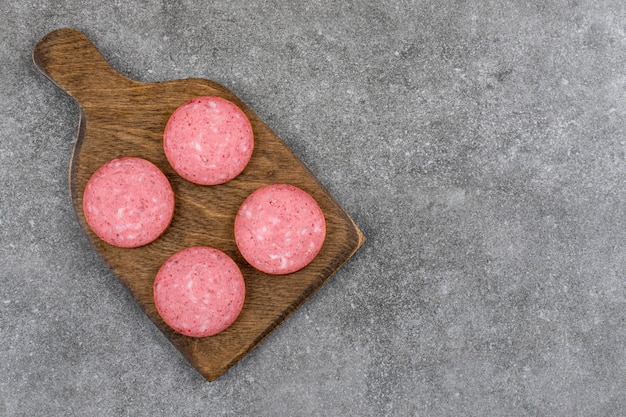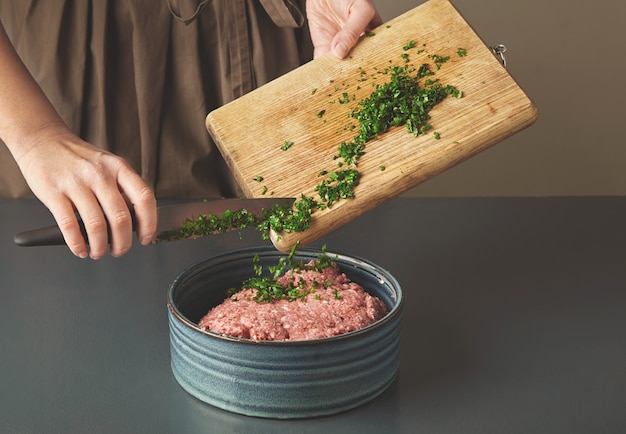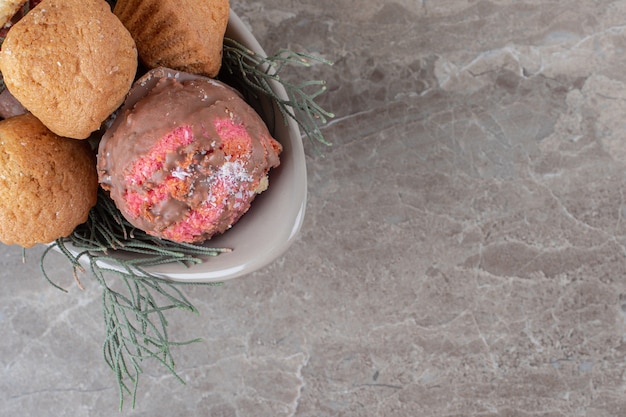Let's face it, sometimes we just don't have the time or energy to whip up homemade burger patties. That's where those trusty frozen fellas come in. Now, I'm not saying they're as good as homemade, but they can be a lifesaver on busy evenings. But here's the thing: cooking a frozen burger patty to perfection is a bit of an art form, and I've learned a few things over the years. So, let's dive in, shall we?
(Part 1)
Choosing Your Patties: The Foundation of Your Burger

The first step is picking the right burger patties. It's a bit like choosing a partner - you want one that's going to be a good match for your taste buds. There are so many varieties out there, it can be a bit overwhelming. Do you fancy beef, chicken, turkey, or something else entirely?
Beef: Your Classic Choice
Beef is the classic burger patty choice, and for good reason. It has a rich flavour that's hard to beat. But even with beef, there are options. You can choose from lean patties, which are lower in fat but might be a bit drier, or fattier patties, which will be juicier and more flavourful.
For a leaner choice, look for patties labelled "80/20" or "90/10," which indicate the percentage of lean meat to fat. These will be a bit drier, but they're a good option if you're watching your fat intake. If you want a juicier patty, go for a "70/30" or even a "60/40" mix.
Chicken: A Lighter Option
Chicken patties are a good choice if you're looking for something a bit lighter. They're usually lower in fat and calories than beef patties, but they can be a bit dry if they're not cooked properly.
For a juicier chicken patty, look for ones that have some added fat, like ground chicken breast with ground chicken thigh or skin. You can also add some moisture to dry chicken patties by mixing them with breadcrumbs or shredded cheese.
Turkey: A Healthy Choice
Turkey patties are a great choice if you're looking for a healthier option. They're low in fat and calories, and they're a good source of protein.
Other Options: Don't Be Afraid to Experiment!
But don't be afraid to experiment! There are all sorts of other burger patty options out there, like veggie patties, lamb patties, or even salmon patties. These can be a great way to add some variety to your burger routine, and they're often packed with flavour and nutrients. Get out there, explore, and see what tickles your fancy!
(Part 2)

Thawing: Getting Ready to Cook

Now, before you get all excited and start firing up the grill, you need to thaw those frozen patties. There are a few ways to do this, and the best method depends on how much time you have.
The Overnight Method: For the Patient Chef
The best way to thaw frozen patties is overnight in the fridge. It's a bit like giving them a nice, long soak in a cold bath. This way, they thaw slowly and evenly, which helps to keep them moist and juicy.
The Cold Water Method: When Time Is Tight
If you're in a hurry, you can thaw the patties in cold water. Simply put them in a sealed bag and submerge them in a bowl of cold water. Change the water every 30 minutes or so to keep the water cold. This method takes about 30 minutes to an hour.
The Microwave Method: A Quick Fix (But Use with Caution)
If you're really in a bind, you can thaw the patties in the microwave. But be careful! Microwaving can make the patties dry and tough, so use a defrost setting and don't overdo it. Keep a close eye on them and stop the microwave as soon as they feel thawed.
(Part 3)
Cooking Methods: Grilling, Pan-Frying, or Baking?
Now, we're getting to the fun part: choosing how you want to cook your patties. Each method has its own advantages, so choose the one that best suits your needs and preferences.
The Grill: For that Classic Char
Grilling is the classic way to cook burger patties. It gives them that beautiful char and smoky flavour that we all love.
Gas Grill: If you're using a gas grill, heat it to medium-high heat. You'll want the grates to be hot enough to sear the patties without burning them.
charcoal grill: For a charcoal grill, get those coals nice and hot, but make sure they've turned grey before you put the patties on. This means the coals are burning evenly and producing a good amount of heat without too much flame.
The Pan: Quick and Easy
Pan-frying is a great option if you don't have a grill, or if you just want a quick and easy way to cook your patties. Heat a pan over medium-high heat and add a bit of oil.
Choose a pan that's big enough to hold the patties without overcrowding them. This will help to ensure they cook evenly.
The Oven: For a Crowd or When You Want to Multitask
Baking is a good option if you're cooking for a crowd or if you want to multitask. Preheat your oven to 400 degrees Fahrenheit (200 degrees Celsius).
Place the patties on a baking sheet lined with parchment paper, and bake for about 15 minutes, flipping them halfway through. This method is great for cooking multiple patties at once and avoids the need to constantly monitor them.
(Part 4)
cooking times: Mastering the Doneness
Now that you've chosen your method, it's time to talk about cooking times. This is where things get a little tricky, as the perfect cooking time depends on the thickness of your patties and your desired level of doneness.
Reading the Signs
Here's the thing: you can't rely solely on a timer. You need to keep a watchful eye on your patties and look for the telltale signs of doneness.
Rare: The center of the patty will be red, with a temperature of about 125 degrees Fahrenheit (52 degrees Celsius).
Medium-Rare: The center of the patty will be pink, with a temperature of about 130 degrees Fahrenheit (54 degrees Celsius).
Medium: The center of the patty will be pink to brown, with a temperature of about 140 degrees Fahrenheit (60 degrees Celsius).
Medium-Well: The center of the patty will be brown, with a temperature of about 150 degrees Fahrenheit (65 degrees Celsius).
Well-Done: The center of the patty will be completely brown, with a temperature of about 160 degrees Fahrenheit (71 degrees Celsius).
Using a Thermometer: The Safest Bet
The safest and most reliable way to ensure your patties are cooked through is to use a meat thermometer. Insert it into the thickest part of the patty, making sure it doesn't touch the bottom of the pan or grill grates.
What to Do if You Don't Have a Thermometer
If you don't have a meat thermometer, you can use a few other methods to check for doneness.
Pressing Test: Press gently on the center of the patty with your finger. If it springs back, it's cooked through. If it remains indented, it needs more time.
Juices: As the patty cooks, it will release juices. If the juices run clear, it's cooked through. If the juices are still pink or red, it needs more time.
(Part 5)
Tips for a Juicy Patty: A Burger That's Worth Bragging About
Now, let's talk about how to make those frozen burger patties as juicy as possible. It's a bit like a magic trick, but trust me, it works.
The Don't-Press-Down Rule
First and foremost, don't press down on the patties while they're cooking! This will squeeze out all the delicious juices, leaving you with a dry and disappointing burger.
Instead, let the patties cook undisturbed. The heat will naturally create a nice sear on the outside while allowing the inside to cook through evenly.
The Fat-Is-Your-Friend Rule
Second, don't be afraid of a little fat. A little bit of fat will help to keep the patties moist and flavorful.
If you're using lean patties, consider adding a bit of butter, olive oil, or bacon grease to the pan or grill. This will help to keep the patties from sticking and add a touch of richness.
The Temperature-Matters Rule
Third, cook the patties over medium-high heat. This will create a nice sear on the outside while allowing the inside to cook through evenly.
The Resting-Time Rule
Finally, let the patties rest for a few minutes before serving. This will allow the juices to redistribute, making for a juicier and more flavorful burger.
You can cover the patties loosely with aluminum foil while they rest. This will help to keep them warm and prevent them from drying out.
(Part 6)
Sides: What to Serve with Your Burger
Now, no burger is complete without a good side dish. It's like the supporting actors in a play: they might not be the main event, but they add depth and flavour to the whole experience.
Classic Choices
The classic burger side dishes are fries, onion rings, and coleslaw. These are tried-and-true favourites for a reason, but don't be afraid to get creative!
Veggie Options
For a lighter and healthier option, try a side salad, a veggie burger, or a baked potato.
Sweet Choices
If you're feeling adventurous, try a sweet potato fry or a side of fruit salad.
Don't Forget the Drinks
And don't forget about the drinks! A cold beer, a refreshing lemonade, or a juicy iced tea all go perfectly with a burger.
(Part 7)
Condiments: The Finishing Touches
Now, let's talk about condiments. They're like the finishing touches on a painting - they can make or break the whole experience.
Ketchup: A Classic for a Reason
Ketchup is the classic burger condiment, and for good reason. It's tangy, sweet, and it adds a nice touch of colour to the burger.
Mustard: A Tangy Kick
Mustard is another popular burger condiment. It adds a nice tangy kick that cuts through the richness of the patty.
Yellow mustard is a classic choice, but you can also try Dijon mustard, honey mustard, or stone ground mustard for a different flavour profile.
Mayonnaise: Creamy Delights
Mayonnaise is a creamy condiment that adds a touch of richness to the burger.
You can use plain mayonnaise, or you can get creative with flavoured mayonnaise, like garlic mayonnaise, chipotle mayonnaise, or sriracha mayonnaise.
Relish: A Crunchy Twist
Relish is a great way to add a bit of crunch and acidity to your burger.
Sweet relish is a popular choice, but you can also try dill relish, bread and butter pickles, or pickled onions for a more tangy flavour.
Cheese: A Melty Treat
Of course, no burger is complete without cheese! Cheddar, Swiss, mozzarella, and pepper jack are all popular choices.
For a gourmet touch, try a blue cheese, a goat cheese, or a smoked gouda.
(Part 8)
FAQs: The Big Questions Answered
Okay, so you've got the basics down. But there are still some lingering questions you might have. Let's address them, shall we?
Q1: What if the patties are stuck to the pan?
A1: This is a common problem, especially with frozen patties. To prevent this, make sure your pan is hot enough and that there's enough oil in the pan. You can also use a non-stick pan or spray the pan with cooking spray. If the patties are already stuck, gently loosen them with a spatula.
If you're using a grill, make sure the grates are clean and well-oiled before you put the patties on.
Q2: How do I tell if the patty is cooked through?
A2: The best way to tell if a patty is cooked through is to use a meat thermometer. Insert it into the thickest part of the patty, making sure it doesn't touch the bottom of the pan or grill grates. The internal temperature should be at least 160 degrees Fahrenheit (71 degrees Celsius) for well-done.
If you don't have a thermometer, you can use the pressing test or the juice test, as described earlier.
Q3: What if the patty is too dry?
A3: A dry patty is a bummer, but it's not the end of the world. You can try adding some toppings that will help to add moisture, like lettuce, tomato, or onion. You can also make a burger sauce with mayonnaise and ketchup to add extra moisture.
Q4: How do I prevent the burger from falling apart?
A4: It can be frustrating when your burger falls apart as soon as you try to pick it up. Here's the trick: try not to handle the patty too much during cooking.
Also, try to cook the patty over a medium-high heat to create a nice sear on the outside, which will help to keep the patty together.
Q5: Can I freeze cooked burger patties?
A5: You can freeze cooked burger patties, but the texture might be a bit different when you thaw them. To freeze, let the patties cool completely, then wrap them tightly in plastic wrap or aluminum foil. You can freeze them for up to 3 months.
When you're ready to eat them, thaw the patties in the refrigerator overnight or in a microwave on a defrost setting. You can reheat the patties in a microwave, oven, or pan.
(Part 9)
Conclusion: Enjoy Your perfect burger
There you have it, folks! The ultimate guide to cooking frozen burger patties to perfection. I hope this guide has given you the confidence to tackle those frozen patties and create a delicious burger that will impress your friends and family.
Remember, the key to cooking frozen burger patties to perfection is choosing the right patties, thawing them properly, cooking them to your desired level of doneness, and adding your favourite toppings.
So, go forth and conquer! And if you have any questions, feel free to ask! Enjoy your burger!
Everyone is watching

Perfect Rice Every Time: The Ultimate Guide to Cooking Rice
Cooking TipsAs a self-proclaimed foodie, I've always been a bit obsessed with rice. It's the foundation of countless cuisi...

The Ultimate Guide to Cooking Asparagus: Tips, Techniques, and Recipes
Cooking TipsAsparagus. The mere mention of this spring delicacy conjures up images of vibrant green spears, crisp and burs...

Ultimate Guide to Cooking the Perfect Thanksgiving Turkey
Cooking TipsThanksgiving. Just the word conjures up images of overflowing tables laden with delicious food, the scent of r...

Prime Rib Roast Cooking Time Chart: Per Pound Guide
Cooking TipsPrime rib roast. Just the name conjures images of lavish dinners, crackling fires, and hearty laughter. It’s ...

Can You Cook Spaghetti with Gasoline? (The Shocking Truth)
Cooking TipsWe've all seen those crazy internet trends. You know, the ones that make you wonder, "Did someone actually try...
